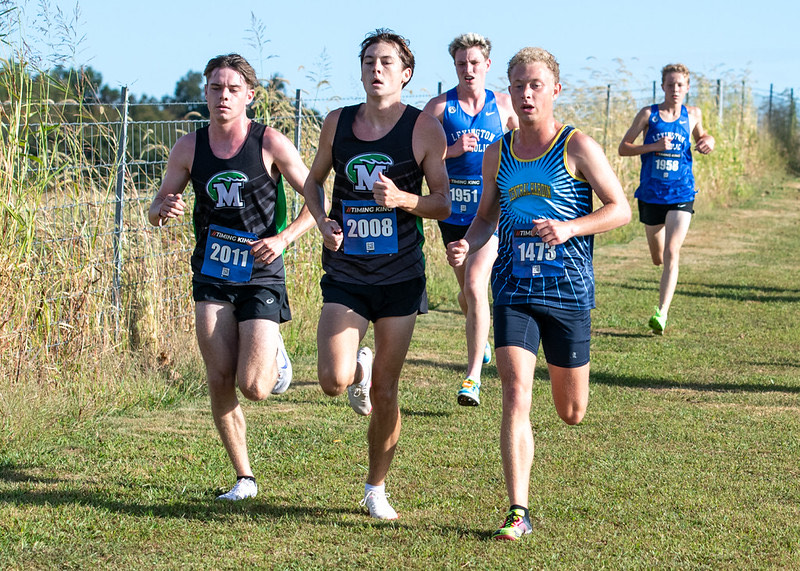You’re wrapping up the warm up with your teammates, chatting, breathing heavily, your muscles beginning to feel the burn. There is sweat dripping down your spine, across your brow, and gathering in the fabric folds of your shirt. The cotton is chafing against your skin, and all you can think about is freeing your body from this threaded prison. However, you know far too well that you simply can’t. So you suffer, striding on, resenting those who have restricted your comfort.
On page 27 of the CHHS student/parent handbook, the second rule of the dress code section reads as follows: “Footwear and shirts must be worn during school and at extra-curricular events related to the school and the district.”
The KHSAA’s procedure for avoiding heat injury/illness does not sanction mandatory water breaks, cooling towels, or removal of protective gear (helmets, pads, etc.) until the heat index has reached 95 degrees. Practice is not canceled county-wide until the heat index has reached a scorching 104 degrees.
Given these facts, a conclusion can be made that even if there is a 94 degree heat index, practice is still on…and shirts must be too. With the recent increase of heat waves, is it time for a change to these rule books?
As a good deal of you know, the later weeks of May behold the peak competitions for spring season sports, and August typically kicks off the start of fall sport match-ups. On both grounds of heat-absorbing turf and blistering asphalt, athletes will battle for a podium finish in the dead heat of summer.
As a runner myself, I too have pleaded with my coaches to let me strip from my sweat-soaked shirt and finish a workout with the pleasure of the breeze to my backs. However, my attempts, alike many others, have always proved to be unsuccessful due to the unanimous cooperation with the rules that KHSAA has warranted for high school athletes.
I do feel arrogant to complain as both my practice and race day wear consist of tank tops and spandex shorts. I empathize with the athletes from the football, baseball, softball, and lacrosse teams in which I often see individuals geared up from head to toe.
Taking a look into the history of this debate, “shirts vs. skins” used to be a popular method in differentiating teams in gym class and miscellaneous practices. There is no clear research to show when society deemed these means unacceptable, but practicing shirtless has become an honorary eighth deadly sin on Hardin County School grounds.
85 percent of the 22 students and staff at CHHS who took part in a survey on the matter voted no, they do not think the dress code should apply for athletes in extracurricular activities. Opinions varied between adults and students in the building.
“The dress code was written in accordance with what is usually done in a regular school day, athletics are not part of the regular school day,” senior Hailey Daugherty said.
This thought has been taken into account as most teams at CHHS offer dri-fit practice apparel for purchase and allow the wear of shorts and tank tops for outdoor conditioning.
“Athletes need to practice as they play,” Assistant Athletic Director Sarah Bauer said. “It may be just as hot at a game as a practice and the option of going shirtless will not exist.”
Adults have also expressed concerns that passerbyers will make inappropriate comments about “under dressed,” underaged kids, and further the concern of unsolicited photography of said kids who are under the supervision of CHHS coaching staff for the duration of practice hours.
“I am not saying that every day people can take their shirts off, but being forced to wear t-shirts can be miserable under [hotter] conditions” junior JROTC Raider Lillian McGlone said.
While I understand why high schools are taking precautions like such, allowing athletes to practice shirtless doesn’t necessarily mean every kid on our premises would suddenly be half-naked. It simply offers a choice for coaches to make for their team or for athletes to make for themselves based on their comfort level and confidence.
Bruin community, I now pose you with the question: is it time for a change to these rule books?




















